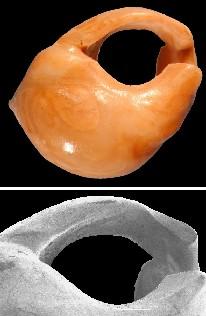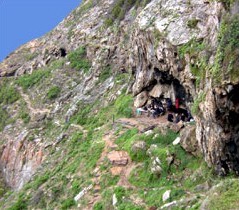|
South Africa Culture - Arts | Science - Education South Africa "cradle of human culture"
- This bead represents new proof that 'modern' man first lived in Africa, comments archaeologist Chris Henshilwood, programme director of the Blombos Cave Project and professor at the Centre for Development Studies of the University of Bergen, Norway's second city. "The Blombos Cave beads present absolute evidence for perhaps the earliest storage of information outside the human brain," he adds.
Mr Henshilwood and his colleagues - including Francesco d'Errico and Marian Vanhaeren of the University of Bordeaux, France, and Karen van Niekerk of the University of Bergen - believe the Blombos bone tools and ochre show that modern behaviour like the use of external symbols developed gradually throughout the Middle Stone Age, not suddenly when our ancestors spread from Africa to Eurasia. Similar finds at other recently excavated African sites support their belief. Some critics have argued that those African artefacts did not represent true symbol use. The newly found beads however strengthen Mr Henshilwood's assertion considerably. According to the Bergen professor, "agreement is widespread that personal ornaments, such as beads, incontrovertibly represent symbolically mediated modern behaviour." - Until now, the oldest beads in Africa date to about 45,000 years, Mr Henshilwood adds. "The discovery of 41 shell beads in sand layers at Blombos Cave accurately dated as 75,000 year old provides important new evidence for early symbolically organised behaviour in Africa." Culture, as we know it, thus emerged long before humanity migrated out of Africa, making South Africa the cradle of human culture, not Europe, as scienti
Blombos Cave contains artefacts from both the Middle and Later Stone Ages. The artefact-rich layers are clearly separated by a layer of dune sand deposited about 70,000 years ago. While Later Stone Ages strata, which are less than 2000 years old, also contain Nassarius shells, they are a different colour from those in the Middle Stone Ages strata. Also the Later Stone Ages shell sizes and the placement of the piercing differ from, and are less uniform than, the Middle Stone Ages shells. Mr Henshilwood and his co-workers conclude that ancient Africans deliberately selected the shells and modified them for use as beads at least 75,000 years ago. To Mr Henshilwood, this clearly indicates that the cave's early inhabitants used symbols in modern fashion. "Once symbolically mediated behaviour was adopted by our ancestors, it meant communication strategies rapidly shifted," he says, "leading to the transmission of individual and widely shared cultural values - traits that typify our own behaviour." The Blombos Cave is located in the nature reserve De Hoop, on the eastern coast of the Cape peninsula, only some four hours drive from Cape Town. The wide-ranging excavations of the Blombos site have so far been funded by the South African National Research Foundation, the University of Bergen, the Paris-based Centre National de la Recherche Scientifique, the European Science Foundation, the US government's National Science Foundation, the Anglo Americans Chairman's Fund and the British Council. By staff writer © afrol News - Create an e-mail alert for South Africa news - Create an e-mail alert for Culture - Arts news - Create an e-mail alert for Science - Education news
On the Afrol News front page now
|
front page
| news
| countries
| archive
| currencies
| news alerts login
| about afrol News
| contact
| advertise
| español
©
afrol News.
Reproducing or buying afrol News' articles.
You can contact us at mail@afrol.com










